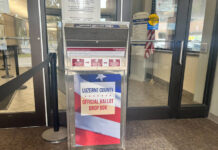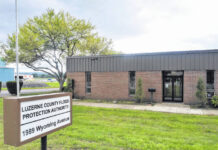EXETER — The new Wyoming Area School District dress code for students in seventh through 12th grade violates freedom of expression, according to students and parents within the school district.
Incoming senior class president Peter Butera said he has spoken to an attorney and may take legal action against the school district saying the code is “unconstitutional.”
“The board completely ignored hundreds of parents and students when we were making a decision,” he said. “I feel like they are taking away freedom of expression.”
Butera was also frustrated with financial budgets for families within the school district.
“If someone’s parents don’t have it in their budget then how can they deny them that right if it’s not financially possible,” Butera said.
During a combined work session and meeting Tuesday, the board voted 6-3 to adopt the dress code which will take effect for the 2016-17 school year for students in seventh through 12th grade. Board members voting against the code were Carl Yorina, Kimberly Yochum and Estelle Campenni.
After months of deliberating over a code that would be policed to fourth through 12th grade students, the board decided to loosen its grip on the code at an executive session earlier this month. From that, it decided to have seventh through 12th grade students follow the code.
The previous dress code, adopted in September 1999, was much looser than the current code now in place.
Soon-to-be Wyoming Area junior Addison Orzel, the freshman and sophomore class president, offered her opinion to the school board on several occasions and is disappointed in the board’s decision.
“For all the students that spoke up, it felt like everyone was being ignored,” she said. “They should listen to us. I can’t think of one person that is excited to go to school now that it passed.”
Orzel said distractions would not be caused by students wearing prohibited clothing, but by teachers or administrators having to halt class to discipline the student.
“In the dress code, it states ‘to prevent disruption to the educational process,’” she said. “They shouldn’t be suspending us for something as silly as having three holes in our jeans. It’s more disruptive to pull us out of class.”
Board member Gerald Stofko, a member of the policy committee that created the code, said the board listened to the younger students’ needs.
“We did not need this in fourth, fifth and sixth,” he said. “In seventh grade, you are starting to become an adult.”
Stofko went on to say the younger students are more active in school, with events such as recess to consider. When students arrive at the Secondary Center, they are expected to dress appropriately. This new, revised dress code, he said, allows school administration to handle violations with concrete facts.
According to the new policy, the dress code “is to ensure that our students dress appropriately, are not disruptive to the educational process, and do not compromise the safety and security of our school.” It goes on to say, “It is not our purpose to interfere with student decisions or freedom of expression.”
Stofko’s biggest issue is with hooded sweatshirts and cargo pants, some of the reasons he voted for the new code. He said with “hoodies,” students can put their hoods up and the administration can’t tell who the student is or what they are doing. Cargo pants, he said, are dangerous.
“You can ask any juvenile detention personnel and they’ll tell you (cargo pants) hide too many things,” he said.
Because of the change in dress code, Orzel and many other students and families must adjust their wardrobe. Orzel said she and her sister do not own a pair of khakis or a collared shirt.
“There are families that don’t have these clothes,” she said.
The policy says if any parents object to the policy based on religious or medical reasons, they must present a signed letter detailing the reason for the objection. “School officials do reserve the right to individually review the students dress and if found unacceptable, can quietly and privately attempt to settle the problem,” the policy states.
If a student is persistently disobeying the dress code, that student will be suspended. Also, the school board may amend the policy at any time.
Orzel said, in the past, the dress code was not enforced on a daily basis. Because of the loose policing, she said, some students are saying they are not going to follow it once school starts this year.
“I want (the school board) to know how this personally affects the students,” she said. “They went over our heads and they didn’t listen to us. We have a voice that should be recognized.”
In June, the board voted to hire an “assistant principal of discipline” at a total cost of $116,000 – a $65,000 base salary and $51,000 for benefits. This will give the high school three principals, Stofko said, and take a load off Quaglia and Assistant Principal Cathy Ranieli.
Tuesday’s meeting was attended by hundreds of students and parents. Stofko said he’s read countless of letters and emails sent to the school regarding the dress code. In the end, he said, he had to do what is best for the school.
“We didn’t want to get in a controversy with every student and adult out there (Tuesday),” he said. “Did I take their point of views? Absolutely. I had to vote for what was right for our school district.”





